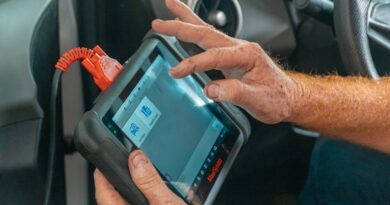How to Replace Worn Brake Pads Easily
Did you know that worn brake pads can increase your stopping distance by up to 20%? That’s a scary thought! If you’re like most drivers, your brakes are something you want to keep in top shape. Replacing worn brake pads is a task you can do yourself and save money while ensuring your safety. Lets dive into how you can easily replace your worn brake pads.
Why Should You Replace Brake Pads?

Brake pads wear down over time. They provide the friction needed to stop your car. If you ignore worn brake pads, you might face serious problems, like:
- Longer stopping distances
- Increased brake noise
- Potential damage to brake rotors
Keeping your brakes in top shape helps you stay safe and can prevent costly repairs down the road. So, how do you know when it’s time to replace them?
How Do You Know When It’s Time to Replace Brake Pads?

Look out for these signs that your brake pads need replacing:
- Squeaking or squealing sounds: This is a common sign that your brake pads are worn.
- Vibration when braking: If your car vibrates when you hit the brakes, it’s time to check your pads.
- Warning light: Some cars have a dashboard light that indicates brake issues.
Listening to your car and being aware of how it feels is key. Trust your instincts; if something feels off, it probably is!
What Tools Will You Need?

Before you start, gather these basic tools:
- Jack and jack stands
- Socket or wrench set
- Brake cleaner
- New brake pads
- Rubber mallet
- Brake grease
Having everything ready makes the job smoother. You wouldn’t want to stop halfway to find out you’re missing a tool!
How Do You Replace Worn Brake Pads? Step-by-Step Guide

Ready to get started? Lets break down the steps.
1. Safety First!
Before you do anything, make sure you’re safe. Park your car on a flat surface and set the parking brake. Wear gloves and safety goggles for protection.
2. Remove the Wheel
Use your jack to lift the car and secure it with jack stands. Once it’s stable, remove the lug nuts with your socket or wrench and take off the wheel. This will expose the brake components.
3. Locate the Brake Caliper
The brake caliper is the part that holds the brake pads. Identify it; it usually looks like a clamp over the brake rotor. Youll need to unbolt it to access the pads.
4. Remove the Old Brake Pads
Once the caliper is off, you can slide out the old brake pads. Pay attention to how they fit, as youll want to install the new ones the same way. Use your rubber mallet if they’re stuck.
5. Install the New Brake Pads
Now it’s time to put in the new brake pads. Slide them into place just like the old ones. Make sure they are secure and straight.
6. Reassemble the Caliper
Carefully put the brake caliper back over the new pads. Tighten the bolts securely but don’t overdo it. You want them tight, but you also don’t want to strip the threads.
7. Put the Wheel Back On
After the caliper is secured, replace the wheel. Hand-tighten the lug nuts first, then lower the car and tighten them fully with your wrench.
8. Repeat on Other Side
If you’re replacing pads on one wheel, it’s a good idea to do the other side too. This ensures even braking performance.
9. Test Your Brakes
Before you hit the road, pump the brake pedal a few times. This helps seat the new pads and ensures they make proper contact with the rotor.
Common Mistakes to Avoid
Even though replacing brake pads is straightforward, some common mistakes can lead to issues:
- Not using the right pads: Make sure you buy pads that fit your cars make and model.
- Skipping the brake cleaner: Always clean the components before installing new pads. This prevents dust and debris buildup.
- Ignoring the rotors: Check your rotors for wear. If they’re damaged, you may need to replace them too.
What If You Don’t Feel Comfortable Doing It Yourself?
If you’re unsure about replacing the brake pads yourself, it’s okay to seek help. Many mechanics can do this for you. Just remember to ask questions and understand what’s being done.
Always get quotes from a few places to ensure you’re getting a fair deal.
Conclusion: Ready to Hit the Road Safely
Replacing worn brake pads doesnt have to be a daunting task. With the right tools and steps, you can do it yourself and save money. Remember, keeping your brakes in good shape is vital for your safety and your vehicles performance.
Now that you know how to replace your brake pads, are you ready to give it a try? Remember to always prioritize safety and don’t hesitate to ask for help if needed!
For more tips on car maintenance, check out our article on Basic Car Maintenance.



